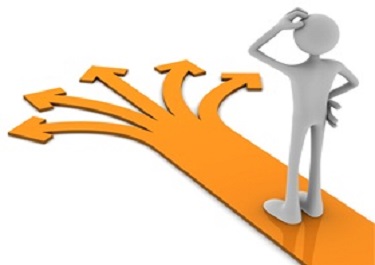 Hardware and software sales are no longer the focus for many channel firms. Sure, some still receive a fairly substantial amount of revenue from their legacy solutions, but shrinking margins and the escalating costs of supporting those offerings are forcing providers to shift their priorities elsewhere.
Hardware and software sales are no longer the focus for many channel firms. Sure, some still receive a fairly substantial amount of revenue from their legacy solutions, but shrinking margins and the escalating costs of supporting those offerings are forcing providers to shift their priorities elsewhere.
A majority of the channel has already made that move. At least according to CompTIA's latest research, "Why Software as a Service? Benefits & Advantages of SaaS," in which nearly three-quarters (74%) of channel partners say they sold SaaS solutions in the past 12 months as part of their cloud-based service portfolio. And a quarter of those businesses identify as "born in the cloud" SaaS startups, not existing channel firms.
The era of transactional sales is waning. The vendor community gets it. Take a look at the SaaS and cloud investments by Microsoft, IBM, HP, Lenovo, Cisco and the other tech giants. While they aren't abandoning hardware and softer, their portfolios and strategies are shifting. Virtually everything, including hardware, is now being offered as a bundle in a subscription model. The "pay as you go" mentality continues to trend upward.
The "WHY SOFTWARE AS A SERVICE? BENEFITS & ADVANTAGES OF SAAS" report is free to CompTIA Premier Members
Why SaaS?
One of the main drivers behind this transformation in the channel is recurring revenue. SaaS provides that consistent stream of income that most business owners need and desire. Cash flow is king, and low commitment, fair margin solutions present a sizable opportunity for tech companies. That consistent monthly income gives them financial stability and access to more capital to build out their business practices and hire new personnel.
Customer demand is another reason for such strong adoption in the channel. In CompTIA's survey, 43% of respondents cited that as the primary driver behind their decision to add SaaS to their portfolio of offerings. Businesses want it and, if providers can't deliver it, their clients may look to competitors or direct suppliers ‒ or procure and implement these solutions themselves.
With its ease of implementation, that last situation is becoming quite common. End users are growing increasingly familiar with SaaS solutions, and that comfort-level often extends into their "at work" activities. With self-provisioning, it takes little to no effort to download apps and add new tools to their PCs, laptops and other devices. In other words, they don't have to wait for an MSP or their internal IT staff to install many SaaS solutions ‒ unless their system security prevents that from happening.
That presents both an opportunity and challenge for the channel. What starts as an end user going rogue may turn into new projects if the company deems those apps useful and needs help rolling it out across the organization. Or they may wish to tighten their policies and implementation requirements. Both situations are potential business opportunities for channel firms.
The downside to "rogue SaaS warriors" is they could find alternatives that appear to work as well, if not better, than the solutions their tech providers currently offer. If the pros and cons are not addressed properly and in a calm, rational manner; the channel firm can end up losing a solution sale, if not the customer.
New Vendor Engagements
One of the biggest changes for providers moving into the SaaS world is supplier relationships. Channel firms may work with ISVs and app vendors in a variety of ways. In the survey, less than one-third (31%) of channel firms identified ISVs and app providers as their strategic partners.
Vendor affiliation is quite low, as would be expected with so many sources and options available. Channel program options in the overall community may be fairly limited.
That's where others are stepping in to fill the void. Forty-one percent (41%) of solution providers who took part in CompTIA's study leverage traditional distribution to source these solutions, with SaaS/application exchange markets and SaaS-specific distributors providing another 32% combined (19% and 13% respectively).
Surprisingly, MSPs procure less of their SaaS/apps through traditional distribution in favor of working more with the exchanges and vendors themselves. Sourcing seems to vary widely between channel partners, including cloud and consulting firms. Those nuances may depend on a number of factors, including existing channel relationships and the business model goals of each organization.
Revenue or Profit?
In the new SaaS world, the channel debate may not be as much over margin or volume as it is over efficiency and new market opportunities. Ease of implementation means providers can expand their portfolios and develop specializations quicker. Margins don't have to be high if support and engineering costs are low.
In fact, many channel firms are using SaaS to lure clients into their lucrative, comprehensive technology programs. For example, a business needing help implementing its CRM application might end up receiving consulting assistance or signing up for a security assessment and managed/cloud services.
That's the flexibility SaaS offers the channel. It can be considered the first date and end up being the foundation for a much longer engagement.
CompTIA Premier Members can download WHY SOFTWARE AS A SERVICE? BENEFITS & ADVANTAGES OF SAAS at no cost. Not a Premier Member? Learn more and register here.
Brian Sherman is president of Tech Success Communications, a channel-related content and social media development firm. He served previously as the chief editor at Business Solutions magazine and senior director of industry alliances with Autotask. Contact Brian at Bsherman@techsuccesscommunications.com

